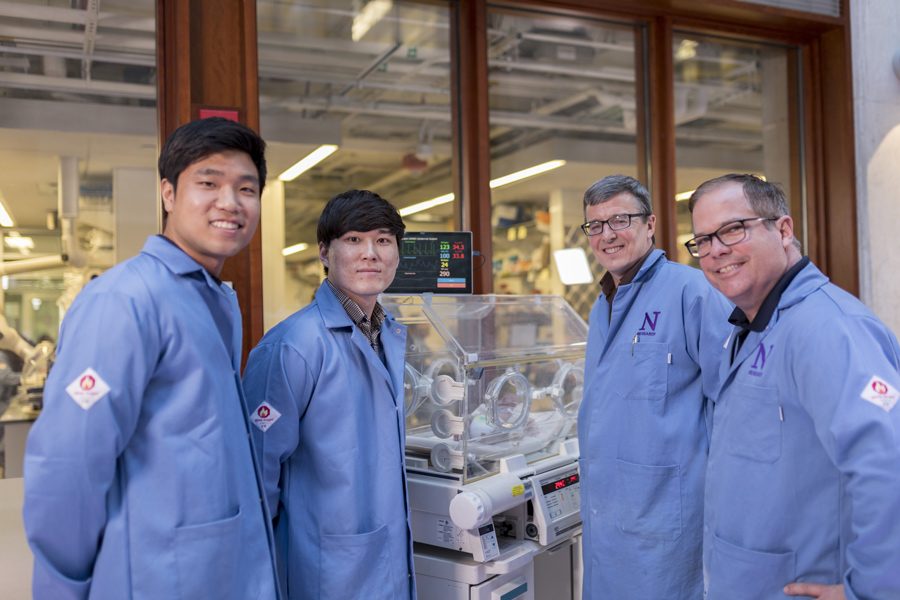Northwestern researchers roll out new sensor to track newborn vital signs
Photo courtesy of Northwestern
A team of Northwestern researchers have recently developed a new sensor to monitor premature newborns’ vital signs. The project has been in the works for four years
March 8, 2019
A group of Northwestern researchers has developed a new sensor to collect and track premature newborns’ vital signs, a step toward creating a safer way of moderating infant well-being.
The team of researchers, led by McCormick Prof. John Rogers, was made up of an interdisciplinary group of engineers, scientists and medical professionals. Rogers said the new sensor — roughly as thick as a piece of paper and about as heavy as a raindrop — was designed to replace the current method to track a newborn’s vitals, which relies on a potentially damaging system of wires and adhesives.
The wires currently used in newborn intensive care units (NICUs) carry “risk of shearing the skin,” said Feinberg Prof. Dr. Amy Paller, who was on the research team for the project. Paller said eliminating those wires and allowing newborns to be untethered from the NICU makes them safer and better enables them to make physical connection with parents, which brings health benefits.
“There is incredibly good data now that skin-to-skin contact makes a huge difference in the health of the baby,” Paller said. “That is the concept of having the baby’s skin against the parent’s skin — just to be able to decrease mortality, improve weight gain (and) reduce the risk of infections.”
In their March study, the researchers wrote that the sensor was found to be just as accurate as current methods to retrieve vital data. With the new sensors, the team was also able to collect even more data that isn’t regularly tracked, like a baby’s blood pressure, according to the study.
Rogers said he sees the potential for the sensors to expand into other health-based applications, like monitoring how much newborns move around and the time they spend crying. Other researchers at NU are studying the potential for these sensors to be used on children and adults, he added.
Rogers said he and his team are preparing for a massive roll-out of these monitors into the developing world in the immediate future.
“We had funding from the Bill & Melinda Gates Foundation and the Save the Children Foundation to deploy devices in India, Pakistan, Zambia and Kenya, starting end of April,” Rogers said. “So that’s a pretty aggressive timeline.”
Feinberg Prof. Dr. Shuai Xu, who also worked on the project, emphasized the teamwork that went into developing the sensor, which serves “the most vulnerable patient population.”
“This was a tremendous collaborative effort.” Xu told The Daily in an email. “It takes a village to do this kind of work.”
Email: austinbenavides2022@u.northwestern.edu
Twitter: @awstinbenavides
Related Stories:
– NU researchers develop wearable throat sensor to help stroke patients
– Renowned bioelectronics innovator John Rogers joins Northwestern faculty
– Global team including NU professors wins $15 million to improve newborn survival in Africa


